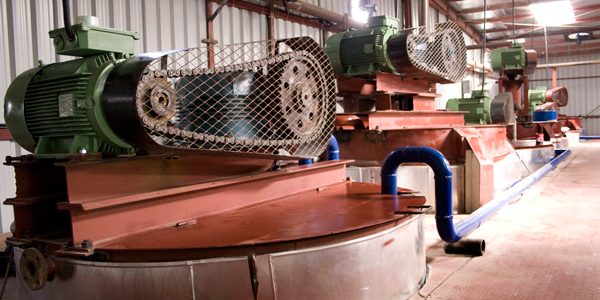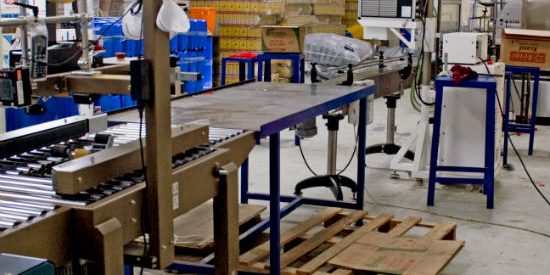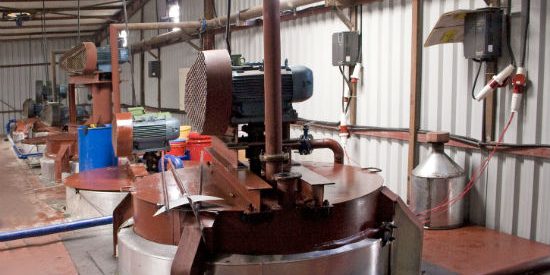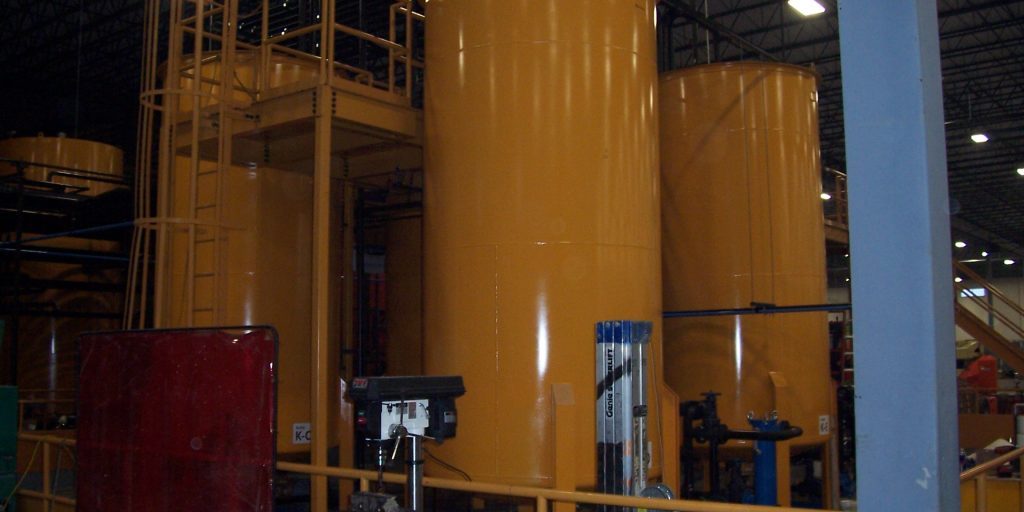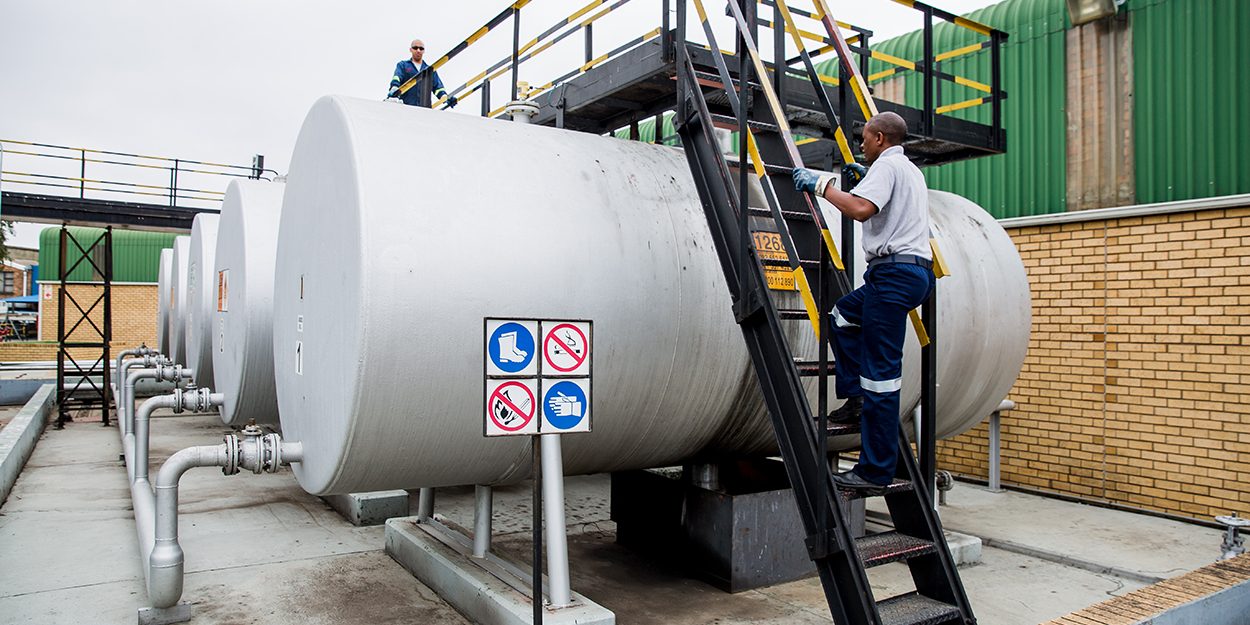Manufacturing & Our Laboratory
We have multiple state of the art facilities for blending and filling of lubricants & greases. We have an installed capacity of blending and filling of more than 40,000 MT of lubricants, 16,000 MT of greases and 6,000 MT of Viscosity Improvers per annum.
We manufacture all types of lubricants like Automotive Oils, Gear Oils, Transmission Fluids, Hydraulic Oils, Turbine Oils, Industrial Lubricants, 2T, 4T and out Board (TCW III) Motor Oils, Auto Coolants, Lithium based Greases and Viscosity Index Improvers etc. We also carryout third party blending and filling of reputed brands – who export these products from our plant to various countries. We also have a state of the art and one of the best R&D and testing lab in the region for lubricants as well as greases which helps us innovate and ensure that our quality standards meet the international testing requirement. Lubricants Testing laboratory is fully equipped with Viscometer bath, Automatic Flash Point, ICP, FTIR, Pour Point, Color Comparator, Densitometer and grease testing equipment with Four Ball( scar test and weld test), Penetrometer (worked and unworked), Drop Point, Roll stability, water wash, Oil separation
to test all samples according to international standards. An indicator of our rigorous emphasis & commitment to quality is that both facilities are ISO 9001- 2008 certified The products blended are filled in 208 L drums, 6×4 L cartons , 6×5 L cartons , 24×1 L cartons , 4X5 L cartons, 12x 1L cartons , 20 L and 25 L pails. The Greases are filled in 180 Kg Drums, 24×1 Kg cartons, 12x 1 Kg cartons , 24×1/2 Kg cartons , 12x ½ Kg cartons and 15 Kg pails.
INDUCTIVELY COUPLED PLASMA ATOMIC EMISSION SPECTROSCOPY ASTM D4951
This test method covers the quantitative determination of barium, boron, calcium, copper, magnesium, molybdenum, phosphorous, sulfur, and zinc in unused lubricating oils and additive packages. This test method usually requires several minutes per sample. This test method covers eight elements and thus provides more elemental composition data. This test method can be used to determine if additive packages and unused lubricating oils meet specifications with respect to elemental composition. A sample portion is weighed and diluted by mass with mixed xylenes. An internal standard, which is required, is either weighed separately into the test solution or is previously combined with the dilution solvent. Calibration standards are prepared similarly. The solutions are introduced to the ICP instrument by free aspiration or an optional peristaltic pump. By comparing emission intensities of elements in the test specimen with emission intensities measured with the calibrated standards and by applying the appropriate internal standard correction, the concentrations of elements in the sample are calculable.

FOURIER TRANSFORMER INFRARED SPECTROSCOPY 65
FTIR can measure the amount of infrared light absorbed at particular wavelengths, develop a ‘spectra’ for the entire infrared wavelength range of how much infrared light was absorbed at what wavelength, and compare that against known standards in a library or against a baseline spectra. On-site FTIR also provides incoming oil quality assurance/quality control, in-service oil analysis and root cause analysis. Basically the FTIR method of Infrared analysis is a quicker and more accurate measurement of Infrared Analysis than the original IR method of analysis.

COLD CRANKING SIMULATOR (CCS) ASTM D 5293 and SAE J300.
Cold-Cranking Simulator (CSS) measure the apparent viscosity of oils at temperatures from –35°C to –5°C within a viscosity range of 900 mPa·s to 25,000 mPa·s. It combines automatic sample loading, computer-controlled operation, and solvent-free cleaning to permit completely unattended operation. No further operator involvement is required after initial loading of the sample table and identification of samples. The CCS- automatically test up to 30 samples at one time, calculate their viscosities, and record the results, freeing the operator for other tasks. Improved temperature management of the rotor/stator eliminates the need for grouping the samples by temperature of analysis, as was necessary in older CCS models. In addition, a thermoelectric sample warming cycle greatly improves the sample flushing process. The CCS meets all the requirements of ASTM D 5293 and SAE J300.

FOUR BALL MACHINE ASTM D2266 & ASTM D2596
ASTM 2596 test method covers the determination of the load carrying properties of lubricating greases. Two determinations are made Load –Wear Index (formerly called Mean-Hertz Load) and Weld Point, by means of the Four-Ball Extreme pressure (EP) Tester. The tester is operated with one steel balls held stationary in the form of a cradle. The rotating speed is 1770 rpm. Lubricating greases are brought to 27⁰C and then subjected to a series of tests of 10-s duration at increasing loads until welding occurs.
ASTM 2266 test method can be used to determine the relative wear-preventing properties of greases under the test conditions and if the test conditions are changed the relative ratings may be different. This test method cannot be used to differentiate between Extreme Pressure (EP) and Non Extreme Pressure (Non-EP) Greases.

FLASH POINT ASTM D92
This test method describes the determination of the flash point and fire point of petroleum products by an Automated Cleveland Open Cup apparatus .This is applicable to all petroleum products with the flash points above 79°C and below 400°C except fuel oils.
Sample filled into a test cup. The temperature of the test specimen increased rapidly at first and then at a slower constant rate as the flash point is approached at specified intervals, a test flame is passed across the cup. The flash point is the lowest liquid temperature at which application of the testflam causes the vapors of the test specimen of the sample to ignite.

POUR POINT ASTM D97
Cloud point and pour point are indicators of the lowest temperature of utility for petroleum products. The sample is periodically examined while it is being cooled in the cloud and pour point apparatus. The lowest temperature at which movement of the test specimen is observed under prescribed conditions of test is recorded as pour point.

VISCOMETER BATH ASTM D445
Kinematic viscosity means the resistance to flow of a fluid under gravity. For gravity flow under a given hydrostatic head, the pressure head of a liquid is proportional to its density. For any particular viscometer, the time of flow of a fixed volume of fluid is directly proportional to its kinematic viscosity. Calibrated viscometers of the glass capillary type are used to determine kinematic viscosity within the limits of the precision given in the precision section.

DROPPING POINT ASTM D566
Dropping point is the temperature at which the grease passes from a semisolid to a liquid state under the conditions of test. A sample of lubricating grease contained in a cup suspended in a test tube is heated in an oil bath at a prescribed rate. The temperature at which the first drop of material falls from the hole in the bottom of the cup is averaged with the temperature readings of the oil bath and recorded as the dropping point of grease.

AUTOMATIC PENETROMETER ASTM D 217
Penetrometer is an instrument that measures the consistency or hardness of semiliquid to semisolid materials by measuring the depth to which a specified cone or needle under a given force falls into the material. The penetration is measured in tenths of a millimeter. The procedures for unworked, worked, and prolonged worked penetration are applicable to greases having penetrations between 85 and 475, that is, to greases with consistency numbers between NLGI 6 AND NLGI 000.

OIL SEPARATION ASTM D6184
This test method is used to determine the tendency of lubricating grease to separate oil at an elevated temperature. This test method shall be conducted at +100⁰C for 30 h unless other conditions are required by the grease specification. This test method is not suitable for greases having a penetration greater than 340 (softer than NLGI No. grade). The weighed sample is placed in a cone-shaped, wire cloth sieve, suspended in a beaker, and then heated under static conditions for the specified time and temperature. Unless otherwise required by the grease specification, the sample is tested at standard conditions of 100⁰C for 30 h. The separated oil is weighed and reported as a percentage of the mass of the starting test sample.


